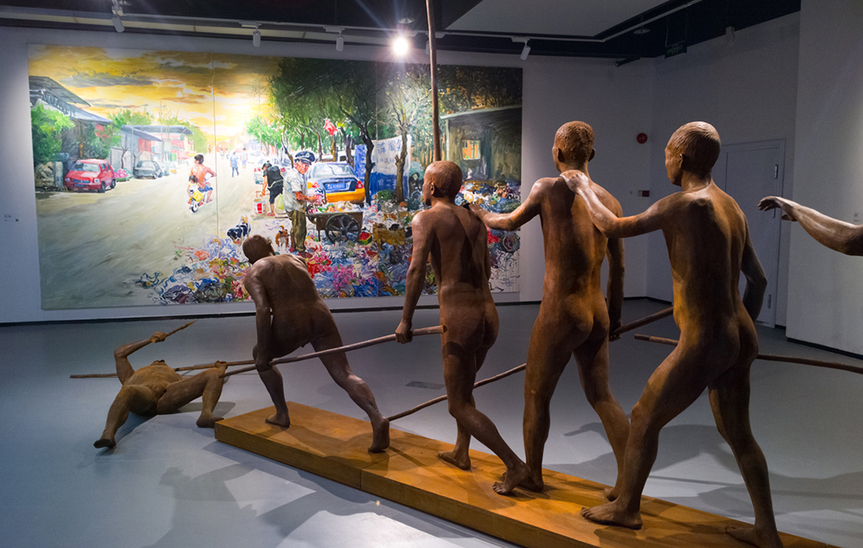
R
E
V N
E
X
T
The 3rd Nanjing International Art Festival (NJIAF) kicked off on November 12, 2016, a day after the Shanghai Biennale opened. The timing, perhaps, was an uncoordinated attempt to synergize and share a pool of visitors flocking to East China for major art shows. Curated by Lu Peng, the third NJIAF carried the theme “Historicode: Scarcity and Supply.” In all, 315 artists and artist groups from 42 countries and territories were tapped to present their creations and fill the Baijia Lake Museum, which is a renovated shopping center that now houses modern and contemporary art.
When ArtAsiaPacific visited the Baijia Lake Museum for “Historicode” in mid-January, there were scant visitors. The situation mimicked the show’s theme—scarce in foot traffic, with a healthy supply of artworks of all sizes, mediums and roots.
For over a decade, China has been described as a state that can churn out tip-top hardware, but trails far behind fellow developed nations in terms of software. In Nanjing, this showed. The concept of repurposing a structure—in this case, turning a shopping mall into an art museum—is admirable, but the unimaginative use of space with crowded artworks cluttering walls delivered a ho-hum encounter. In an ocean of information spewed forth by a range of creations that nominally follow a theme but fail to complect, this viewer was lost at sea, with no lifeboat in sight.
The Nanjing International Art Festival is on view at the Baijia Lake Museum until February 12, 2017.
Brady Ng is Hong Kong desk editor at ArtAsiaPacific.
To read more of ArtAsiaPacific’s articles, visit our Digital Library.





